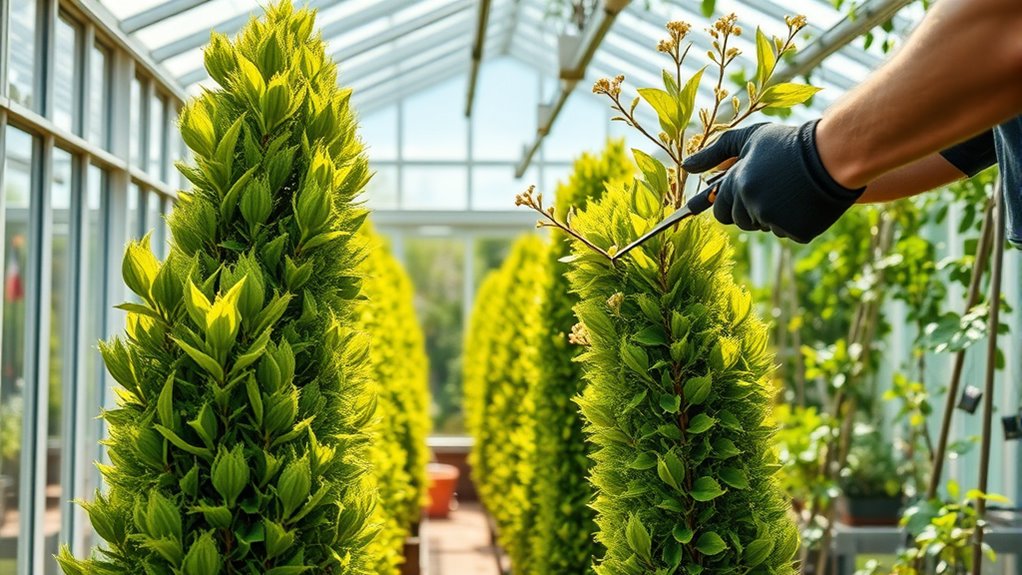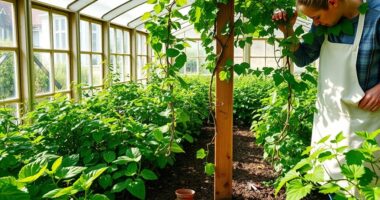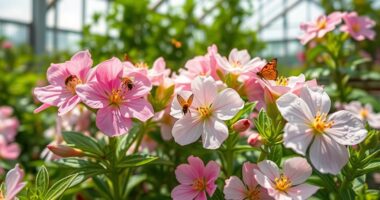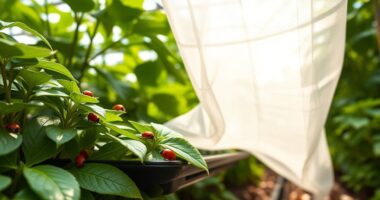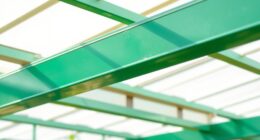To keep your greenhouse plants in shape, focus on proper pruning and training techniques that promote healthy growth and better yields. Use support structures like trellises suited to each plant’s habit, and regularly prune to remove damaged or unnecessary leaves and stems. Shape plants to improve airflow and sunlight exposure, which reduces disease risk. By maintaining these practices, you’ll foster robust healthy plants. Keep exploring for more tips to optimize your greenhouse garden even further.
Key Takeaways
- Regularly prune dead or damaged leaves to promote healthy growth and airflow.
- Use trellising and support structures suited to the plant’s growth habit for stability and shape.
- Train stems through pinching or bending to direct growth and improve light exposure.
- Adjust pruning and training techniques as plants mature to maintain optimal shape and productivity.
- Monitor plant response regularly and modify support and pruning strategies for continuous health and shape.
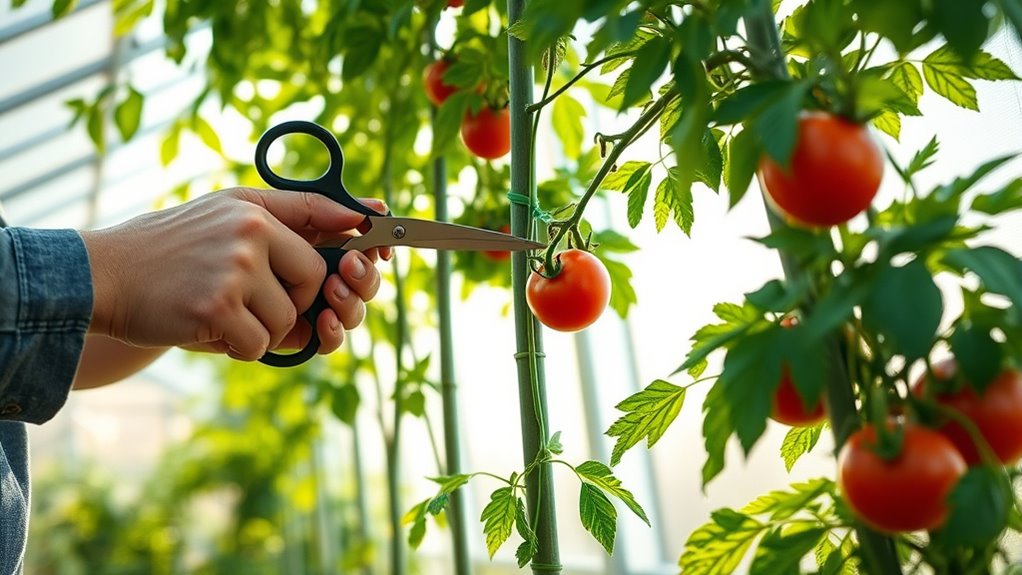
Have you ever wondered how to maximize your plant’s growth and fruit production? One of the most effective ways is through proper pruning and training, which help you shape your plants and encourage healthy development. A key component of this process involves trellising techniques, which support your plants as they grow and keep them organized. By implementing these methods, you give your plants the space they need to thrive while making maintenance easier. Trellising not only supports the weight of fruits and foliage but also improves airflow around your plants, reducing disease risk and promoting faster growth. When choosing trellising techniques, consider the type of plant you’re growing and its growth habits. For vine-like plants, a vertical trellis allows for better sunlight exposure and easier harvesting. For sprawling plants, horizontal support systems or cage setups might be more suitable. The goal is to keep the plant’s structure open enough for light and air penetration, which enhances photosynthesis and overall health. Proper support structures are essential for maintaining plant stability and ensuring optimal growth conditions. Growth regulation is another essential aspect of pruning and training that directly impacts your plant’s productivity. By controlling the growth pattern, you prevent your plants from becoming overly dense or tangled, which can lead to disease and reduced yields. Regularly removing unnecessary or damaged leaves and stems helps redirect the plant’s energy toward producing larger, healthier fruits or flowers. Training techniques like pinching or bending stems can also stimulate new growth in desired directions, ensuring your plants stay manageable and productive. You should always keep an eye on the plant’s overall form, adjusting your pruning strategy as it matures. For example, early in the season, you might encourage vigorous growth with minimal pruning, but as the plant develops, you’ll need to selectively remove excess growth to maintain shape and airflow. Applying growth regulation through strategic pruning and training enhances your plant’s ability to focus its energy on fruit production rather than excessive foliage. It also allows you to control the size and shape of your plants, making your greenhouse space more efficient. Remember that different plants have distinct needs, so observe how your plants respond to your techniques and adapt accordingly. Consistent maintenance, combined with thoughtful trellising and growth regulation, ensures your plants stay healthy, productive, and beautifully organized. With patience and practice, you’ll develop a keen eye for what your plants need, leading to a more bountiful and manageable greenhouse garden.
Frequently Asked Questions
How Often Should I Prune My Greenhouse Plants?
You should prune your greenhouse plants based on their specific needs, typically every 4-6 weeks, to promote healthy growth. Keep an eye on your watering schedule to avoid over- or under-watering, which can stress plants and attract pests. Regular pruning also helps with pest management by removing dead or infested leaves. Adjust your pruning frequency as plants grow and season changes occur, ensuring they stay healthy and productive.
What Tools Are Best for Pruning Greenhouse Plants?
When choosing tools for pruning greenhouse plants, you want reliable, sharp options like pruning shears and grafting knives. Pruning shears are perfect for trimming stems and small branches efficiently, while grafting knives help with more delicate cuts and plant propagation. Make certain your tools are clean and sharp to prevent damage and disease transmission. Investing in quality tools ensures precise cuts, promotes healthy growth, and keeps your greenhouse plants in top shape.
Can Pruning Help Prevent Plant Diseases?
Ever wonder if pruning can truly shield your plants from disease? It can, by boosting disease prevention and plant health. When you prune, you remove dead or infected parts, reducing infection risk. Plus, better airflow and light circulation help keep pathogens at bay. So, next time you trim, know you’re actively protecting your plants, ensuring they stay vibrant and healthy. Pruning isn’t just shaping—it’s your secret weapon against disease.
When Is the Ideal Time to Start Training Plants?
You should start training your plants during their early growth stages, ideally when they’re young and flexible. Seasonal timing is important; begin in spring or early summer when growth accelerates. This way, you guide their shape and structure as they develop, making training more effective. Consistently check your plants and adjust training techniques to match their growth stages, ensuring healthy development and ideal yields.
How Do I Train Plants for Better Light Exposure?
Imagine your tomato plant reaching for the sun, but its growth is uneven. To improve light exposure, you should gently train it using stakes or trellises, guiding branches to maximize light optimization. Consistently adjusting and tying the plant helps shape enhancement, ensuring all parts receive adequate sunlight. This proactive approach boosts growth, yields, and health, making your greenhouse thrive with vibrant, well-exposed plants.
Conclusion
By regularly pruning and training your greenhouse plants, you can boost growth and improve yields. Did you know that properly pruned plants can produce up to 30% more fruit or flowers? Keep an eye on your plants’ shape and health, and you’ll enjoy healthier, more productive greenery. Remember, a little effort now can lead to bountiful results later. Stay consistent, and your plants will thank you with vibrant growth and abundant harvests.
